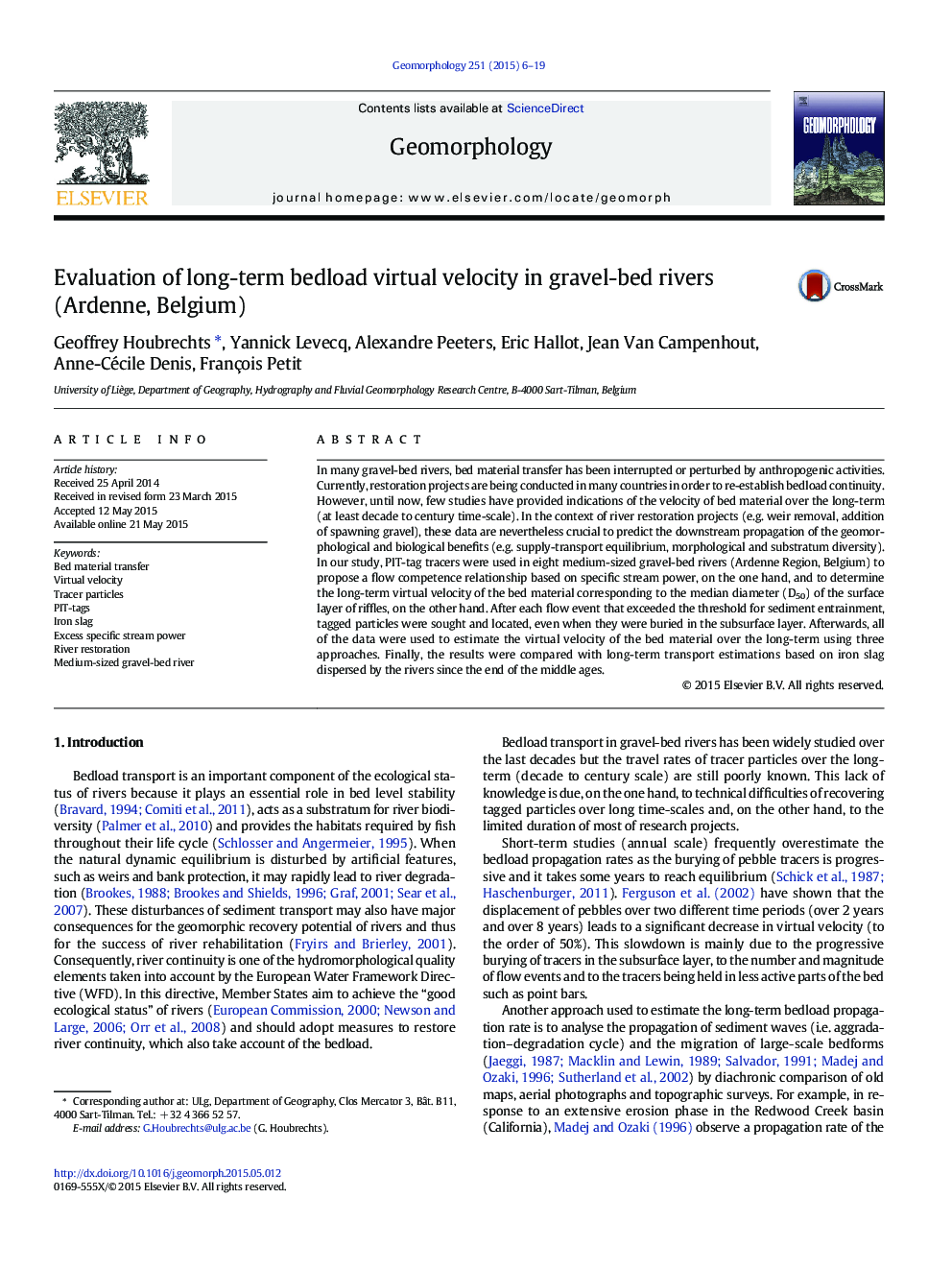| Article ID | Journal | Published Year | Pages | File Type |
|---|---|---|---|---|
| 4684139 | Geomorphology | 2015 | 14 Pages |
•The long-term (at least decade scale) bedload virtual velocity is still poorly known.•PIT-tags are reliable tracers to study particle entrainment and movement in medium-sized gravel-bed rivers.•Bedload virtual velocity is estimated using three approaches based on specific stream power and excess of stream power.•A flow competence relationship is proposed for rivers with specific stream power comprised between 15 and 200 W.m− 2.•This study provides key information to predict the downstream geomorphological benefits of river restoration projects.
In many gravel-bed rivers, bed material transfer has been interrupted or perturbed by anthropogenic activities. Currently, restoration projects are being conducted in many countries in order to re-establish bedload continuity. However, until now, few studies have provided indications of the velocity of bed material over the long-term (at least decade to century time-scale). In the context of river restoration projects (e.g. weir removal, addition of spawning gravel), these data are nevertheless crucial to predict the downstream propagation of the geomorphological and biological benefits (e.g. supply-transport equilibrium, morphological and substratum diversity). In our study, PIT-tag tracers were used in eight medium-sized gravel-bed rivers (Ardenne Region, Belgium) to propose a flow competence relationship based on specific stream power, on the one hand, and to determine the long-term virtual velocity of the bed material corresponding to the median diameter (D50) of the surface layer of riffles, on the other hand. After each flow event that exceeded the threshold for sediment entrainment, tagged particles were sought and located, even when they were buried in the subsurface layer. Afterwards, all of the data were used to estimate the virtual velocity of the bed material over the long-term using three approaches. Finally, the results were compared with long-term transport estimations based on iron slag dispersed by the rivers since the end of the middle ages.
